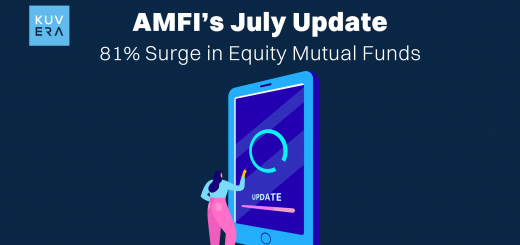The Day Raj Missed the Cut-Off – A Tale of SEBI’s New Mutual Fund Timing Rules
Raj Mehta was a meticulous investor. A finance professional by day and a stock market enthusiast by night, he prided himself on his ability to time his investments just right. But one Tuesday afternoon, he learned a valuable lesson—the hard way.
The Investment Opportunity
It was 2:50 PM, and Raj was tracking the stock market on his laptop. The Nifty had dipped significantly, and he saw an opportunity to invest in an equity mutual fund at a lower NAV.
Confidently, he logged into his mutual fund portal and placed a purchase request for ₹5 lakhs in a well-performing flexi-cap fund. Since he had always known the mutual fund cut-off timing to be 3:00 PM, he believed he had made it just in time.
Little did he know that the SEBI regulations had changed, and his well-planned move was about to backfire.
The Unexpected Shock
The next day, Raj eagerly checked his account, expecting to see his purchase processed at the previous day’s lower NAV. Instead, he was shocked to find that his units were allotted at a significantly higher NAV, reflecting the market’s overnight rebound. His expected gains had vanished before he even started.
Confused, he called his mutual fund distributor, Anil.
“What’s going on? I made my investment before 3:00 PM, so I should’ve gotten yesterday’s NAV, right?” Raj asked, frustration creeping into his voice.
Anil sighed, “Raj, you didn’t hear? SEBI changed the rules. Now, for non-liquid funds, even if you invest before the cut-off time, you only get the NAV of the day the money actually reaches the fund house.”
Raj’s heart sank. He had transferred funds through his bank account, and they had taken until the next day to process the payment. As a result, he got the NAV of the next day, which was significantly higher. He had unknowingly paid a premium simply due to a timing miscalculation.
The New SEBI Rules: What Changed?
Anil patiently explained, “SEBI revised the cut-off time rules to ensure transparency and fairness.
Cut-off time in mutual funds refers to the time by when the NAV is frozen for the day and applied to transactions. If an investor places a request before the cut-off time and the funds are realized within the stipulated period, the applicable NAV will be of the same day; otherwise, the next business day’s NAV applies. This timing ensures transparency and consistency in mutual fund transactions.
Anil explained that the key changes regarding cut-off time are:
1. For Equity, Debt, and Hybrid Funds
The cut-off time remains 3:00 PM (2:30 PM on Kuvera) for both purchases and redemptions. However, the NAV you receive will now be based on when your funds are actually credited to the AMC, not just when the order is placed.
2. For Liquid & Overnight Funds
The cut-off time for purchases is 1:30 PM. To receive the previous business day’s NAV, the funds must be credited to the AMC on time.
- For Liquid Funds, the redemption cut-off remains at 3:00 PM.
- For Overnight Funds, the redemption cut-off is 7:00 PM.
3. Instant Transfers Matter
If you transfer money via RTGS or UPI directly to the AMC, you can still secure the same day’s NAV. But if you use net banking or other slower modes, the NAV could shift to the next business day.”
Raj leaned back, letting this information sink in. He had been investing for years but had never imagined that the simple act of fund realization timing could make such a big difference.
The Impact on Investors
Raj’s situation was not unique. Thousands of investors who were used to the old system had faced similar shocks. SEBI’s changes meant:
1. Timing Mattered More Than Ever
Investors could no longer assume that placing an order before the cut-off time guaranteed the same day’s NAV.
2. Fund Transfer Speed Became Crucial
Real-time payment methods like UPI and RTGS became preferable to traditional net banking.
3. Market Volatility Became A Bigger Risk
Investors had to be mindful of when their funds would actually be used for unit allocation, as overnight market movements could impact NAVs significantly.
Impact on Investment Transactions
- Time for fund realization and NAV applicability changed
- Payment modes and processing times to be considered
- Strategic planning for transactions became must
- Strategies to navigate the revised timings include the following:
- Utilising Systematic Investment Plans (SIPs)
- Leveraging on technology and online platforms
- Staying informed about fund house policies
- Monitoring market conditions
Turning a Setback into a Strategy
Raj wasn’t one to dwell on mistakes. He spent the next few weeks refining his strategy to ensure he never fell into the same trap again.
1. Switching to Faster Payment Methods
He ensured that all his future mutual fund investments were made via UPI or RTGS to ensure instant fund transfers and same-day NAV allocation.
2. Investing in SIPs
Instead of trying to time the market manually, he increased his Systematic Investment Plan (SIP) contributions. This way, he could invest consistently without worrying about NAV timing.
3. Early Transactions
Whenever he made lump sum investments, he executed them well before noon to avoid banking delays.
What could be Next??
Recently, SEBI has floated a consultation paper, for bringing a change in cut-off timings to determine applicable NAV with respect to repurchase/ redemption of units in overnight schemes of Mutual Funds from 3 pm to 7 pm. The change aims to provide stock brokers and clearing members more time to un-pledge units and place redemption requests.
Wrapping Up
A month later, Raj was back at his laptop, ready to make another investment. This time, he executed the payment at 11:00 AM via UPI, ensuring immediate fund realization. He double-checked his AMC’s confirmation and verified that his NAV would be as expected.
As he closed his laptop, he smiled. He had learned an expensive lesson, but in the world of investing, knowledge was as valuable as money.
SEBI’s rule change had caught him off guard, but he had adapted—and that was what truly mattered.
Moral of the Story: In the ever-evolving financial world, staying informed isn’t optional—it’s essential.
Interested in how we think about the markets?
Read more: Zen And The Art Of Investing
Watch here: Learn about the F&O craze in India












